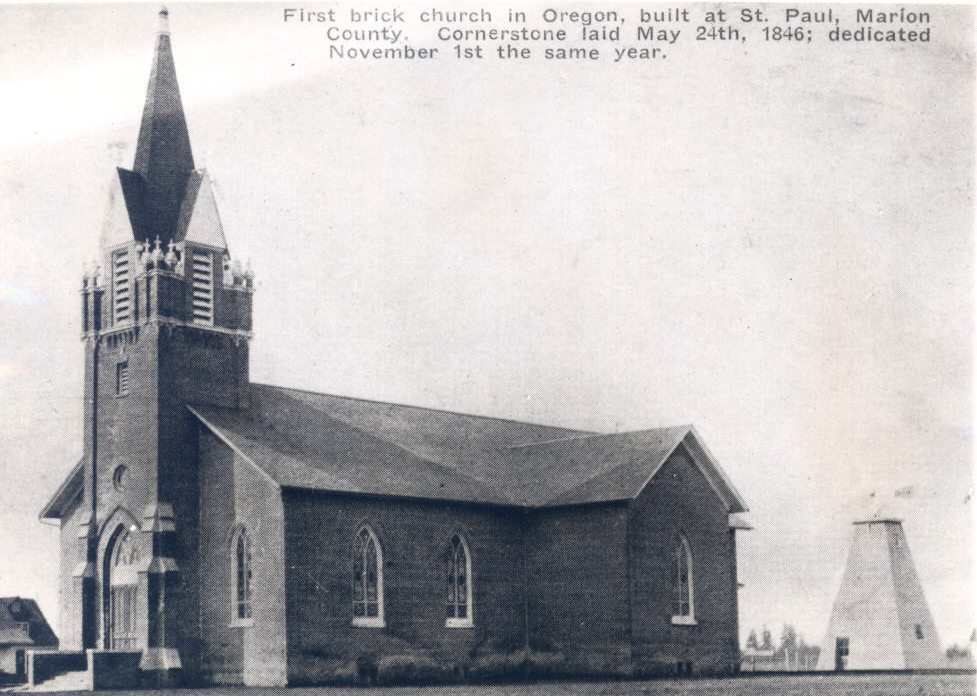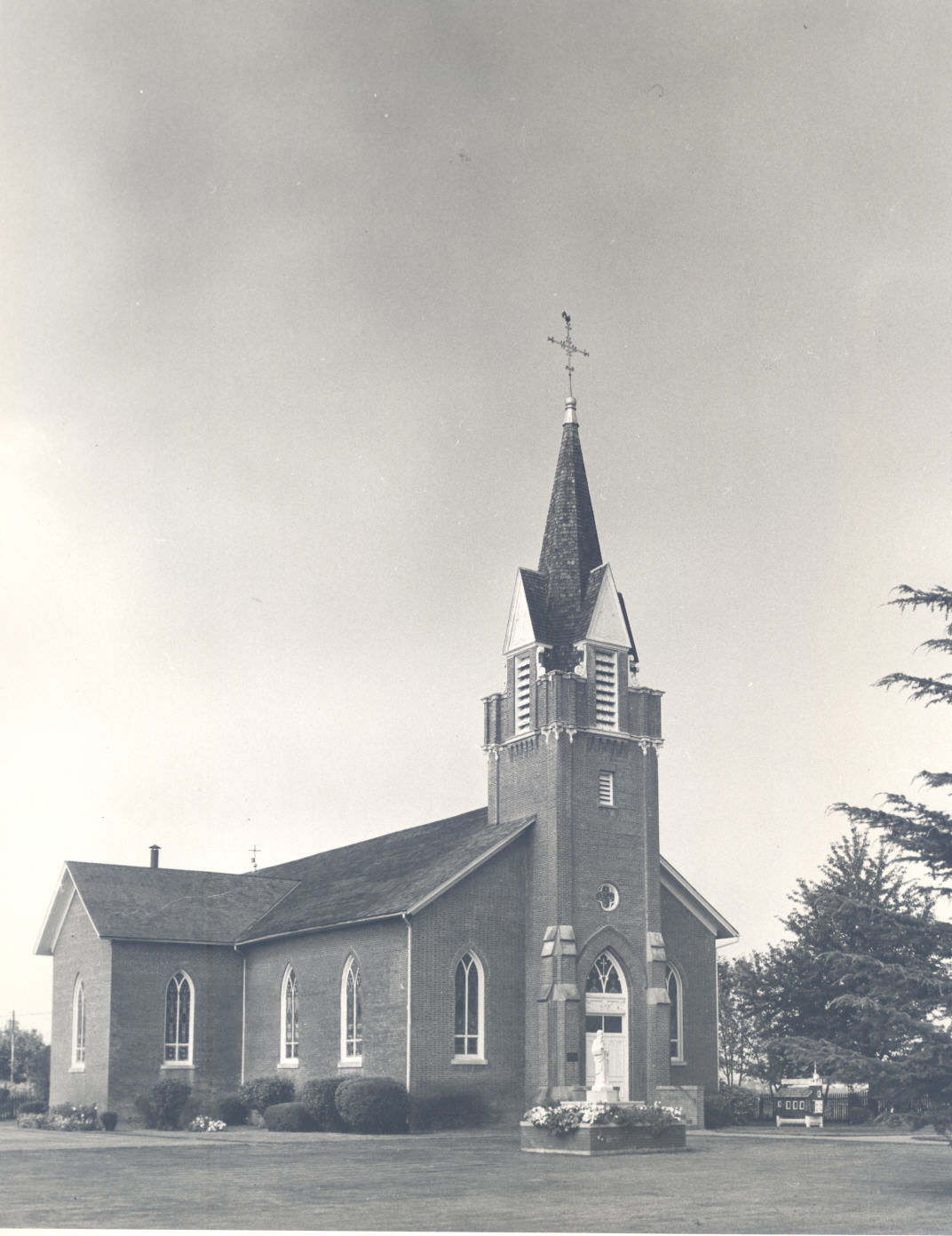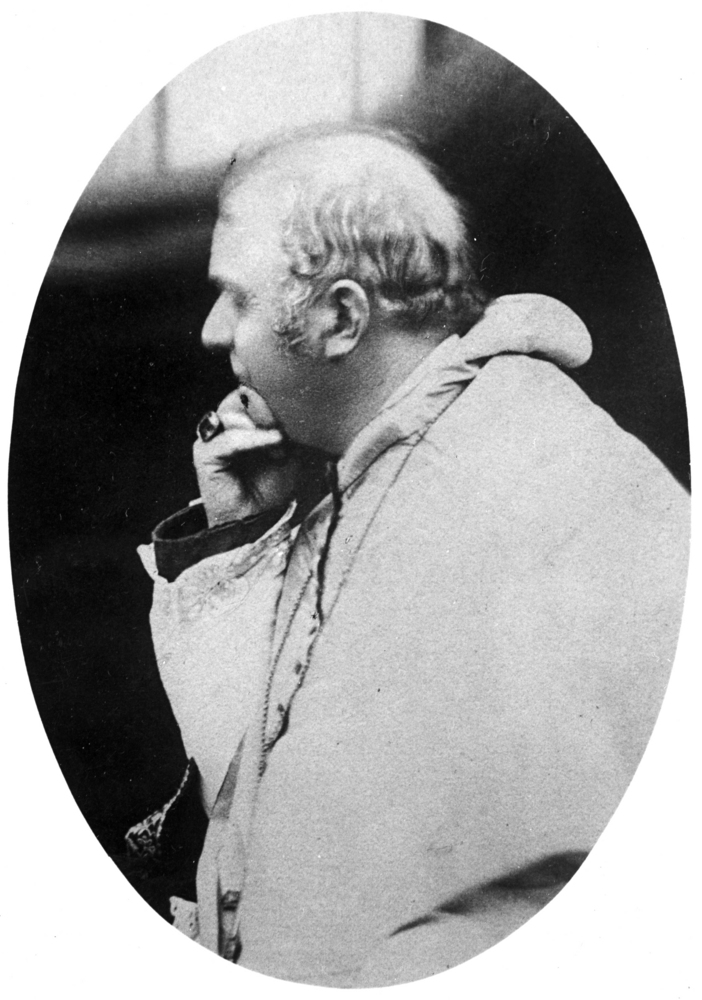The St. Paul Roman Catholic Church was established in the mid-Willamette Valley in 1836, the first Catholic church in the Oregon Country and the headquarters for the Catholic Church in Oregon. The first Catholic Mass in Oregon Country south of the Columbia River was celebrated in the small log church in January 1839 by Father Francois Blanchet. Rebuilt in 1846, St. Paul’s is the oldest brick building in the Pacific Northwest.
In 1836, French Canadian trappers who had worked for the Hudson’s Bay Company and had settled with their families in French Prairie constructed a 30-by-70-foot log structure to serve members of St. Paul’s. In July 1834 and again in February 1835, Joseph Gervais and other settlers had asked the Catholic Church in Red River, in present-day Manitoba, to send priests to their community. In March 1837, after receiving no satisfaction, they wrote the Bishop of Quebec.
Two Catholic priests, Francois Norbert Blanchet and Modeste Demers, arrived at Fort Vancouver in November 1838. Father Blanchet, who had been appointed vicar general of the Oregon mission, traveled to St. Paul, where he dedicated the church on January 6, 1839, the Feast of the Epiphany. He also claimed about 2,500 acres of land for the mission. The land, which was used for farming to support the church community, included the church, a flourmill, and a sawmill. St. Joseph's College, a school for boys, was opened in 1842. The mills were sold to James McKay in 1848.
In 1842, Father Pierre DeSmet arrived in St. Paul seeking help for the Catholic missions in the Oregon Country. After traveling to Europe seeking help, he returned to St. Paul in August 1844 and established the St. Francis Xavier Mission, about a mile west of St. Paul Church. He brought with him six sisters of Notre Dame de Namur, who established an academy for girls at the mission. The mission also served as the headquarters of the Jesuits in Oregon, but it was too remote a location to serve the missions that were at a distance, some over five hundred miles away, and it closed after five years.
A new church was built in 1846, reportedly using 160,000 bricks fired on site at a cost of $20,000. The foundation was laid and blessed on May 24. The church, dedicated on November 1, was 100 feet long and 45 feet wide with two 15-by-15-foot side chapels. The building was designed in the shape of a cross and had an 84-foot-high bell tower, a distinctive landmark. The church bell, cast in Belgium, was installed in 1846.
On September 19, 1847, Blanchet, now an archbishop, conducted the first ordination of a priest in the Oregon Country in St. Paul Church. Demers was consecrated bishop in the church on November 30, 1847, the first bishop ordained in the Oregon Country. The first Provincial Council of the Catholic Church in the Pacific Northwest was held in St. Paul on February 28, 1848. In 1870, a steeple was added to the building, and the church was totally renovated between 1900 and 1903 at a cost of about $15,000.
An earthquake on March 25, 1993, severely damaged the church. Because of the building’s historical significance, the parish decided to restore it, and the walls were taken down and rebuilt with concrete and steel before reinstalling the original bricks. The church was rededicated on November 5, 1995. The St. Paul Roman Catholic Church was added to the National Register of Historic Places in 1979.
-
![]()
St. Paul Roman Catholic Church.
Courtesy Oreg. Hist. Soc. Research Library
-
![]()
St. Paul Roman Catholic Church.
Courtesy Oreg. Hist. Soc. Research Library, 984d158
-
![Scale model of the original church built in 1836.]()
St. Paul Roman Catholic Church, 1965.
Scale model of the original church built in 1836. Courtesy Oreg. Hist. Soc. Research Library
-
![]()
Father Francois N. Blanchet.
Oregon Historical Society Research Library OrHi 61321 & bb004274
Related Entries
-
![Francois Blanchet (1795-1883)]()
Francois Blanchet (1795-1883)
François Norbert Blanchet arrived in Oregon in November 1838 as …
-
![Modeste Demers (1809-1871)]()
Modeste Demers (1809-1871)
Modeste Demers answered the missionary call to Oregon in 1838, just two…
-
![St. Paul]()
St. Paul
St. Paul was one of the first white settlements in Oregon, established …
-
![St. Paul Cemetery]()
St. Paul Cemetery
The town of St. Paul, established in 1839, was the first Catholic missi…
Related Historical Records
Map This on the Oregon History WayFinder
The Oregon History Wayfinder is an interactive map that identifies significant places, people, and events in Oregon history.
Further Reading
McKay, Harvey J. St. Paul, Oregon 1830-1890. Portland, Ore.: Binford & Mort, Publishers, 1980.
Munnick, Harriet D., and Mikel D. Warner, eds. Catholic Church Records of the Pacific Northwest: St. Paul, Oregon 1839-1898 Volumes I, II and III. Portland, Ore.: Binford & Mort, Publishers, 1979.










